By Andrew Kreig // The Washington Post’s obituary last week of a pioneering African-American lawyer continued the paper’s controversial coverage of the 1963 assassination of President John F. Kennedy and the 1964 murder of his lover Mary Pinchot Meyer, shown above with JFK at the White House.
On May 21, the Post published a long and respectful obituary, Dovey Johnson Roundtree, 1914–2018, about an African-American woman by that name (shown below left) who overcame racial bias to carve out impressive careers in the military, law, and ministry in a Washington, DC work environment that was heavily segregated for most of her career.
 One of Roundtree’s highlights was winning a 1965 jury acquittal for Raymond Crump, Jr., an African-American day laborer whom authorities had charged with murdering Meyer on a canal towpath near her home in the capital’s fashionable Georgetown neighborhood.
One of Roundtree’s highlights was winning a 1965 jury acquittal for Raymond Crump, Jr., an African-American day laborer whom authorities had charged with murdering Meyer on a canal towpath near her home in the capital’s fashionable Georgetown neighborhood.
Obituary writer Harrison Smith reported on Roundtree’s civic commitment and skill in winning the acquittal. The reporter also quoted two commentators — journalist / author Nina Burleigh and attorney Robert Bennett — as opining that Crump was guilty, despite the jury verdict.
 Several JFK assassination researchers, including this editor and another Meyer biographer, Peter Janney (right), sharply challenged via reader comments and letters to the Post its taint of Crump (and by implication Roundtree).
Several JFK assassination researchers, including this editor and another Meyer biographer, Peter Janney (right), sharply challenged via reader comments and letters to the Post its taint of Crump (and by implication Roundtree).
Another critic, CAPA member Paul Kuntzler, used the dispute to urge the U.S. Attorney for the District of Columbia to renew the murder investigation by focusing on a witness against Crump, retired professor William L. Mitchell, whom Janney has accused of being a CIA asset who participated in an effort to frame Crump on a claim that he murdered Meyer during an attempted rape that she resisted.
Mitchell has responded through the years with conflicting statements, as amplified below.
 In 2007, Kuntzler (a retired exhibit sales manager for the National Science Teachers Association shown at right) spent his life savings of nearly $200,000 on two pages of advertising in the New York Times denouncing that newspaper, the Washington Post and other major news organizations for failing to cover JFK murder and cover-up evidence fairly.
In 2007, Kuntzler (a retired exhibit sales manager for the National Science Teachers Association shown at right) spent his life savings of nearly $200,000 on two pages of advertising in the New York Times denouncing that newspaper, the Washington Post and other major news organizations for failing to cover JFK murder and cover-up evidence fairly.
As a preview of our treatment below:
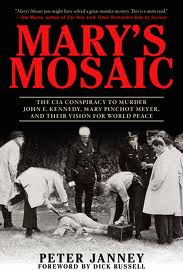 Janney, the son of high-ranking CIA executive Wistar Janney, has argued in his investigative book Mary’s Mosaic: The CIA Conspiracy to Murder John F. Kennedy, Mary Pinchot Meyer, and their Vision for World Peace, that his father and Meyer’s ex-husband Cord Meyer, another high-ranking CIA executive, were among those in the agency implicated in her murder on (Oct. 12, 1964).
Janney, the son of high-ranking CIA executive Wistar Janney, has argued in his investigative book Mary’s Mosaic: The CIA Conspiracy to Murder John F. Kennedy, Mary Pinchot Meyer, and their Vision for World Peace, that his father and Meyer’s ex-husband Cord Meyer, another high-ranking CIA executive, were among those in the agency implicated in her murder on (Oct. 12, 1964).
Her shooter used two bullets to kill her on a canal towpath in the fashionable Georgetown neighborhood in the nation’s capital.
Janney, drawing also on other research typically ignored by the media, asserts that murder motive was fear by authorities that the well-connected Meyer — sister-in-law to Post-Newsweek rising star Ben Bradlee, among her other influential contacts — would use her connections to expose flaws in the Warren Commission report issued in September 1964.
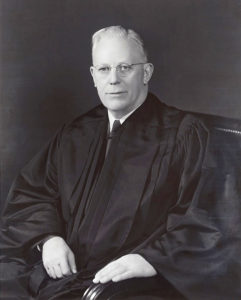 That panel led by Supreme Court Chief Justice Earl Warren (right) claimed that JFK was murdered by Lee Harvey Oswald, acting alone. The commission, which included former CIA Director Allen Dulles, also claimed that Oswald’s killer Jack Ruby, a Dallas nightclub owner, had no connection to the mob despite Ruby’s longtime work with Mafia leaders who had sub-rosa alliances with parts of the CIA, law enforcement at the national and Dallas levels, and anti-Castro Cubans.
That panel led by Supreme Court Chief Justice Earl Warren (right) claimed that JFK was murdered by Lee Harvey Oswald, acting alone. The commission, which included former CIA Director Allen Dulles, also claimed that Oswald’s killer Jack Ruby, a Dallas nightclub owner, had no connection to the mob despite Ruby’s longtime work with Mafia leaders who had sub-rosa alliances with parts of the CIA, law enforcement at the national and Dallas levels, and anti-Castro Cubans.
The Roundtree obituary failed to quote Janney or any other backer of Roundtree’s defense of Crump. Instead, it cited only the establishment lawyer Bennett and Burleigh, whose 1998 biography of Meyer was A Very Private Woman.
The reaction to those few paragraphs in the obituary criticizing the jury acquittal of Crump prompted reaction mostly because the perceived slant paralleled the Post’s biased and at times self-protective coverage for decades of JFK’s assassination, which occurred during a Dallas motorcade on Nov. 22, 1963.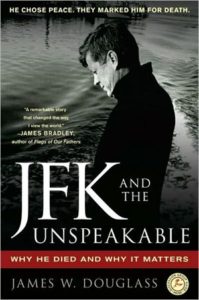
As documented in the Justice Integrity Project’s 52-part “Readers Guide to the JFK Assassination,” the Post has thrown its editorial weight behind the Warren Report from 1964 to present. The newspaper, with rare exceptions, has ignored or trivialized the most compelling contrary scientific, documentary and witness evidence.
That evidence draws on some five million pages of declassified documents and more than 2,500 books in whole or part about the assassination. Many critics of the Warren Commission believe the single best book for general readers summarizing the evidence is JFK and the Unspeakable by James Douglass, published in 2009.
Ben Bradlee, moreover, played a key role in the Post’s coverage through the years, first as the Washington bureau chief of the Post-owned Newsweek and then as the Post’s longtime executive editor.
He was also a key participant in the Meyer case in several ways: As a news executive, brother-in-law to the victim, personal friend of the president, and witness in the Crump trial. Perhaps most notably, he helped deliver the murder victim Meyer’s diary to CIA master spy James J. Angleton (left), a mutual friend of Bradlee and the victim, and kept that entire matter secret at the trial and out of the media.
Not until a scoop by an outsider in 1976 did the reading public learn that Meyer had had an affair with Kennedy during his presidency. 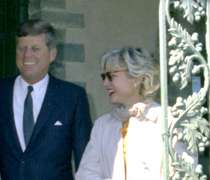 Mary Meyer is shown at the White House with the president during one of her visits with Bradlee and his wife Antoinette Pinchot Bradlee.
Mary Meyer is shown at the White House with the president during one of her visits with Bradlee and his wife Antoinette Pinchot Bradlee.
‘Fake News’ Factors?
Meanwhile, Bradlee had been achieving iconic status as a fearless, crusading editor leading the public’s right to know about such tough investigative stories as the Pentagon Papers (recently chronicled by a Hollywood film) and Watergate. One of his quotations is shown below.
 Simmering under the surface, however, public opinion polls for decades have shown that more than 60 percent of Americans do not believe the Warren report despite the efforts of mainstream media like the Bradlee-led Post to reinforce the report and downplay critics, whether contemporaries like Meyer (ex-wife of Cord Meyer, one of the top CIA propagandists for many years), or scientific, law enforcement, and other experts..
Simmering under the surface, however, public opinion polls for decades have shown that more than 60 percent of Americans do not believe the Warren report despite the efforts of mainstream media like the Bradlee-led Post to reinforce the report and downplay critics, whether contemporaries like Meyer (ex-wife of Cord Meyer, one of the top CIA propagandists for many years), or scientific, law enforcement, and other experts..
Many Americans suspect that the Post, like other news organizations, places a higher importance in protecting its institutional interests (including relationships with government and/or other power brokers) than on the public’s right to know about truly sensitive matters. This would be despite the long-standing campaigns of the news sector to promote Bradlee, among others, as paragons of fearless truth-telling.
Yet any news organization is constantly generating new material that complicate, if not undermine, suggestions of unwarranted, pervasive self-censorship. On May 27, for example, the Post published a breakthrough, in-depth report quoting law professor and environment activist Robert F. 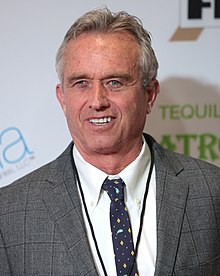 Kennedy Jr. (shown at right) as saying he no longer believes the official story that his father was killed in 1968 by the still-imprisoned convict Sirhan Sirhan.
Kennedy Jr. (shown at right) as saying he no longer believes the official story that his father was killed in 1968 by the still-imprisoned convict Sirhan Sirhan.
The powerful front-page story headlined Who killed Bobby Kennedy? His son RFK Jr. doesn’t believe it was Sirhan Sirhan was reported by the Post’s Tom Jackman.
On March 30, Jackman published on the Post’s front page a similar breakthrough report, Who killed Martin Luther King Jr.? His family believes James Earl Ray was framed, quoting members of the King family as stating they did not believe that Dr. Martin Luther King was fatally shot by the convict James Earl Ray, who died in 1998 in prison.
Reasonable observers might differ on whether the Post’s two front-page stories this spring illustrate the strength of the free press and journalistic initiative, or are long-overdue course corrections.
But it’s hard to imagine that the details are not worth reviewing, as we enable with the materials below, especially during current times when a current president is so reckless broadcasting claims of “fake news” against the Post and many other leading news organizations.
The material above is an introduction to an in-depth column authored by CAPA member Andrew Kreig and published by the Justice Integrity Project. To read the full column (available at no charge) and see its extensive appendices, please click here.

